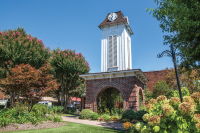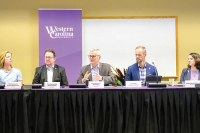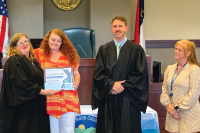Fix the flaws, stay the course
Waynesville’s land-use plan is an ambitious set of ideas adopted during a booming economic era and thus full of the optimism of such times. Now that times are tougher, we hope task force members charged with updating the plan don’t forsake its guiding principles, a pedestrian-friendly new urbanism that is well-suited to meet future challenges.
Waynesville’s regulations guiding development and growth were adopted in 2002 after 29 months of public input. The rules address everything from building placement on lots to landscaping and signs, and the plan is marked by a decidedly liberal mixed-use philosophy that allows contrasting uses in close proximity as long as certain standards are met.
Since its adoption, there have been many flashpoints as town leaders sought to allay the concerns of builders and developers and address flaws in the plan. Finally, the decision was made to appoint a blue-ribbon task force to update the regulations, and that group has been working for months on modifications.
As expected, parking is one most contentious issues. Current regulations guide parking to the rear of buildings, creating a street wall that re-creates a downtown look rather than the traditional setbacks that give parking lots the dominant spot in nearly all commercial development. A big question is whether this look — examples include the CVS pharmacy and McDonald’s on Russ Avenue — forces too many concessions from business owners, and whether it is practical at all as one of the plan’s guiding philosophies.
We think it is. While concessions can be made in certain areas of town and on particular lots, we believe strongly that the pedestrian-guided growth will remain popular. Years fly by fast, and this land-use plan needs to look to the future. We’re not talking about next year or even five years from now, but more like 25 or 30 years down the road.
A couple of decades from now more people will be walking and biking, and we will have more mass transit. More and more people have decided that protecting what’s special about their communities is tied to the personal choices they make. In other words, shopping near one’s home and not being so dependant on the automobile and fossil fuels are important if our small towns are to thrive. This kind of future fits perfectly with the new urbanism land-use model that Waynesville has adopted.
As is always the case, the future depends on what happens now. Waynesville has to modify its land-use plan to fix the flaws, but let’s not throw out the baby with the bathwater. The new urbanism model will evolve, but it is growing in popularity for many very important and essential reasons. Communities who get on board early — and stay the course — will reap the benefits in the decades to come.





